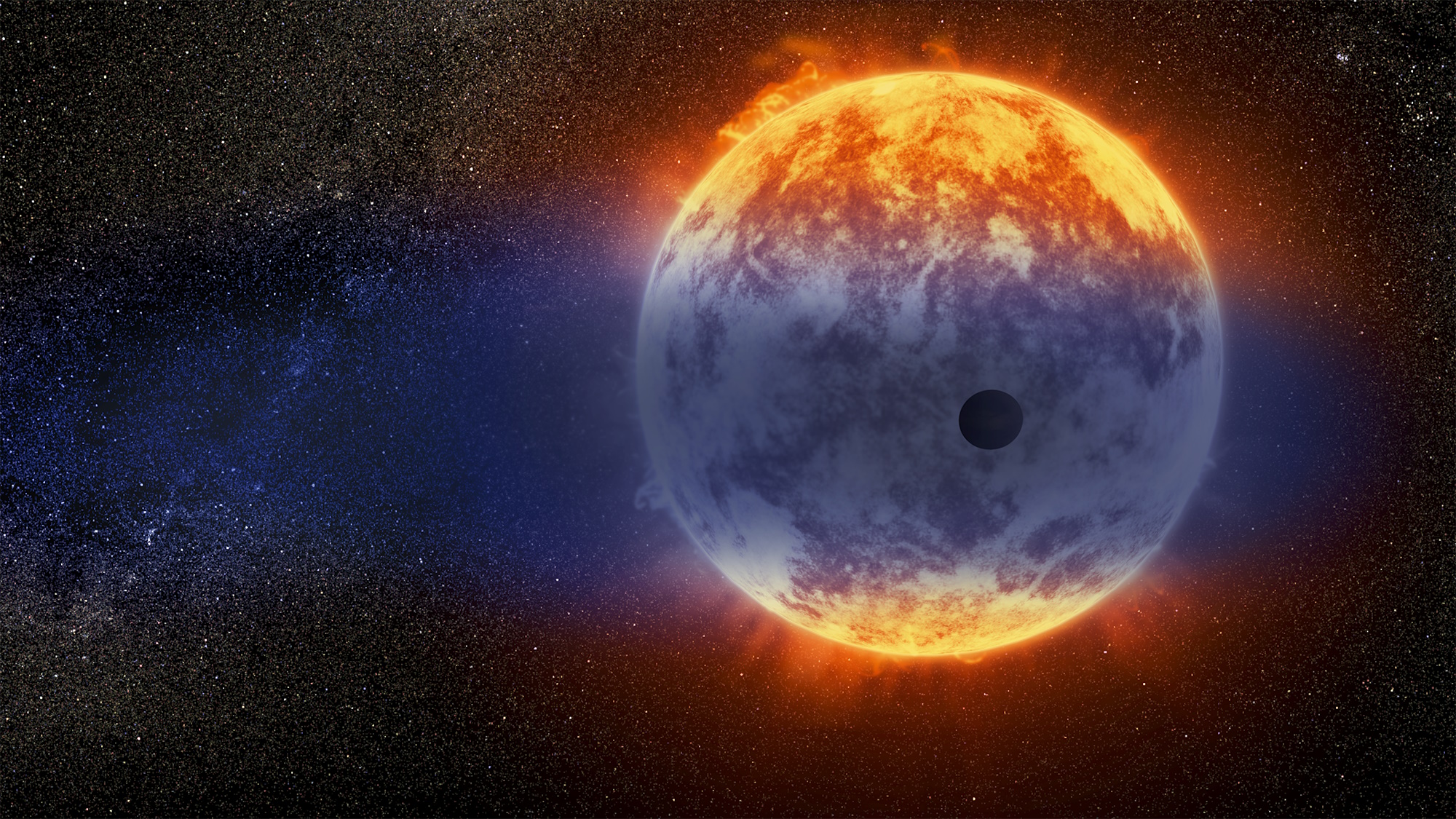Forget Alien Megastructures, New Observations Explain Tabby’s Star With Dust Alone
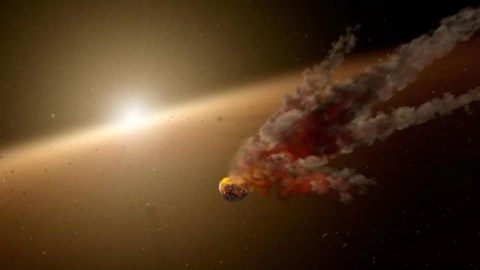
The most unusual star known has finally had its dimming scientifically explained. Here’s the unusual, dusty resolution.
The science of planet-hunting has truly taken off in the 21st century, with the transit method leading the way. When a planet passes in front of its parent star, relative to our line-of-sight, some of the star’s light will disappear for a short while. These transits are a prolific method for exoplanet hunters to search for worlds around other stars. As of today, we know of thousands of stars with worlds around them, and most of them were discovered by transit.
When you design a mission optimized to look for planets, you expect that the technique is going to uncover a few oddities. But nothing prepared astronomers for the oddball that is Tabby’s star, whose flux dims by a tremendous amount, without any regularly repeating signals. After years of speculation involving scenarios ranging from comet storms to alien megastructures, scientists have finally solved the mystery. Dust, in an entirely new way, looks to be the culprit.
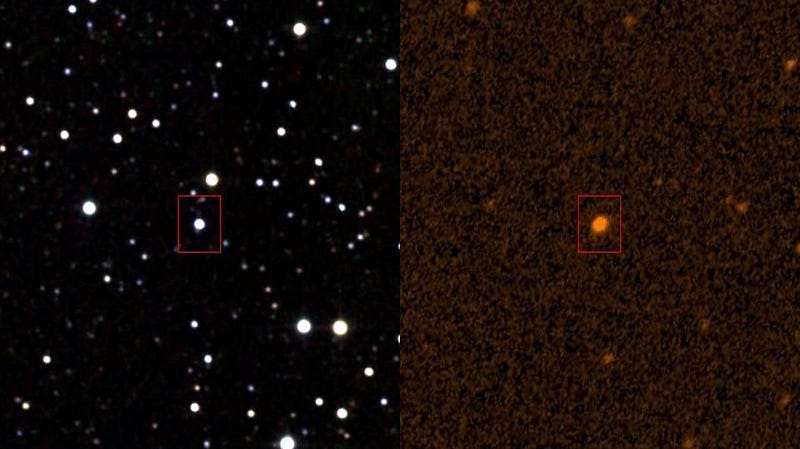
NASA’s Kepler mission changed the game, surveying over 100,000 stars for a period of many years. Of the hundreds of thousands of stars that NASA’s Kepler spacecraft observed, one stands out as the most unusual. KIC 8462852 — known colloquially as either Tabby’s/Boyajian’s star (after the discoverer of its interesting behavior, Tabetha Boyajian) or the WTF? (for where’s the flux?) star — has a combination of properties that make it entirely unique. All at once, it:
- exhibits huge drops in its flux, by up to 22% (while most planets cause <1% dips),
- fades slowly over timescales of decades with occasional brightening events (which no other, similar stars are known to do),
- where the overall brightness fluctuates around the dips (rather than the smooth decrease-and-increase seen for planets),
- but with no infrared emission (which all other stars with large flux dips possess).
This created a huge puzzle.
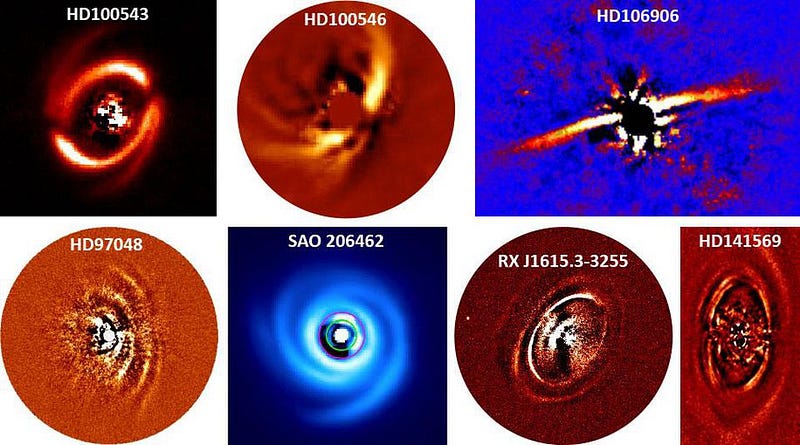
It couldn’t be planets, because no planet is large enough to block that much light from its star. Even if you envision a planet with an enormous ringed system, like a super-Saturn, those flux dips would be both periodic and exhibit a smooth pattern with a plateau. This contradicts the available data.
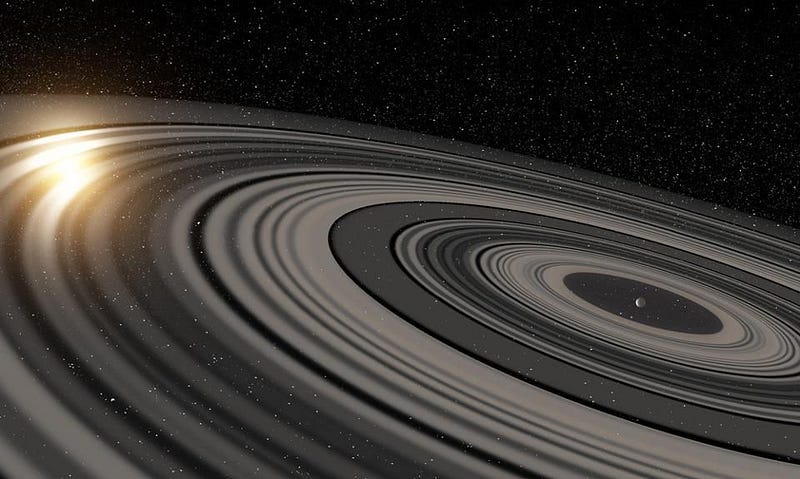
This could have been a very young star, with planetesimals, a proto-planetary disk, and an extremely dusty environment. We’ve seen stars with large flux dips around them, and they’ve all fallen into this category.
But Boyajian’s star is much too old to have a protoplanetary disk: many hundreds of millions of years too old. It also, most importantly, doesn’t exhibit the infrared flux emission that a star with a protoplanetary disk ought to have. This is why the star was originally named the “WTF?” (for where’s the flux?) star.
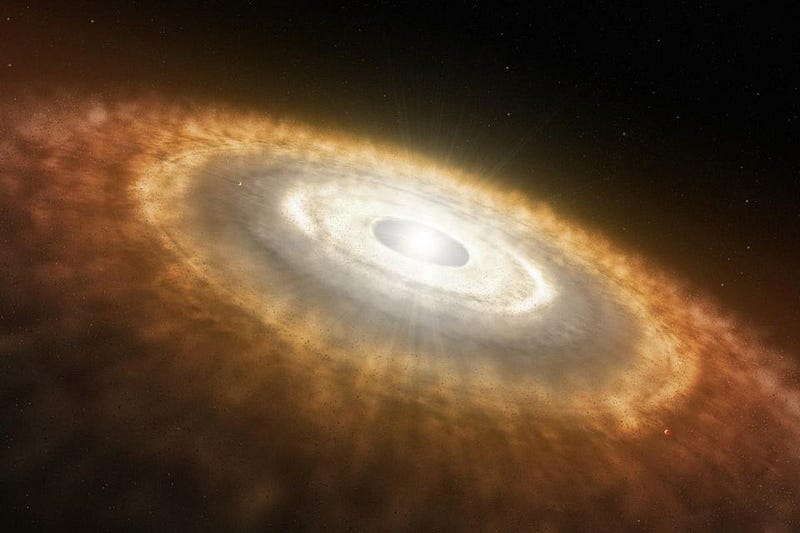
It could be a series of cometary events, where they emit large amounts of dust being kicked up as they infall onto the inner portion of the solar system in question. This could, as was shown relatively recently, explain the short-term flux dips that have been seen.
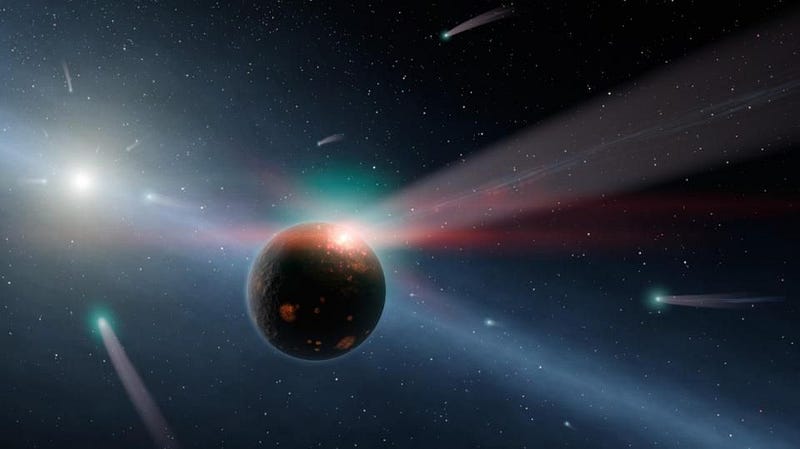
But there’s another phenomenon that this proposed solution cannot account for: the long-term dimming of the star. This star isn’t called “Tabby’s star” or “Boyajian’s star” because it was discovered by that particular scientist; only because she led the scientific investigation concerning the interesting and important new behavior.
But this star has been known for over a century, and observations indicate a long-term fading, which this model cannot account for. Cometary dust gets blown off on the timescales of months; it would take a near-continuous bombardment of comets to sustain a reduced flux over the timescale of over a century. Many comets in a similar orbit would be required, which is not something we know how to obtain.
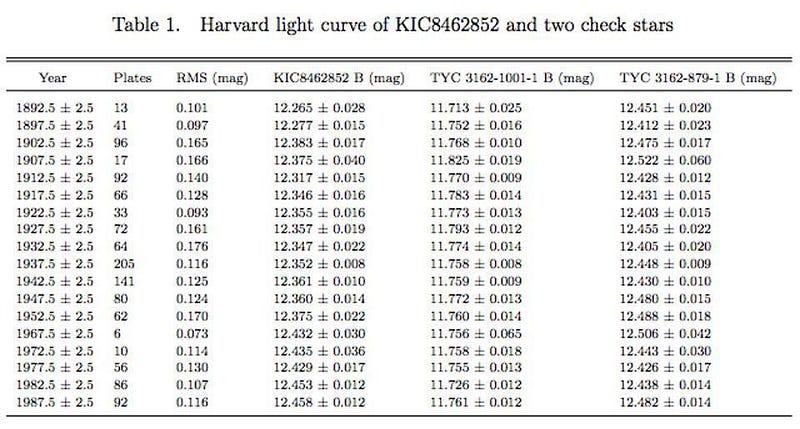
So, what possible explanations remained? One popular idea that was advanced was that of alien megastructures: that a civilization far ahead of humanity, technologically, was constructing an apparatus that periodically (or aperiodically) blocked a large percentage of the star’s light. As the structure became more and more complete, that would increase the amount of light that was blocked. Over the past century, the fact that the light from this star had dimmed by such a significant amount could be explained by an advance in how completed the structure would be.
It’s a compelling, if out-of-the-box, idea.
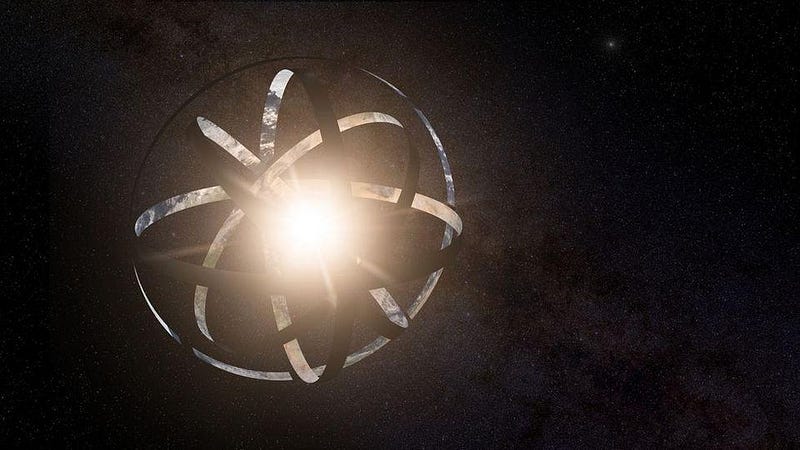
But thanks to a myriad of follow-up observations, we know that it’s wrong. The reason? An object like an alien megastructure would be completely opaque to light: it would be unable to pass through it. This is equally true of things like planets, moons, or any other “solid” objects you can imagine.
From over 19000 images taken over the past three years, in four different wavelength bands from blue light all the way to infrared light, we’ve learned that blue light is preferentially blocked in all dimming events: from the short-term flux dips to the long-term fading of the star. There’s one thing known that can cause bluer light to be blocked while redder light is preferentially transmitted: dust particles that go down to at least a certain, minimal size.
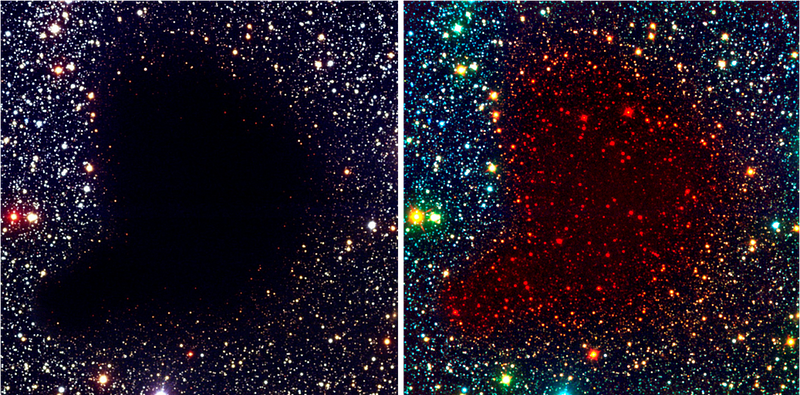
It must, therefore, be dust. Whatever is causing the flux dips, as well as whatever’s causing the long-term fading, must both have a dusty origin. The Kepler dips and the “secular dimming” are caused by the same phenomenon. According to the new paper itself:
This chromatic extinction implies dust particle sizes going down to ~0.1 micron, suggesting that this dust will be rapidly blown away by stellar radiation pressure, so the dust clouds must have formed within months. The modern infrared observations were taken at a time when there was at least 12.4% ± 1.3% dust coverage (as part of the secular dimming), and this is consistent with dimming originating in circumstellar dust.
This is where the evidence points: to dust. But this is still a bit mysterious.
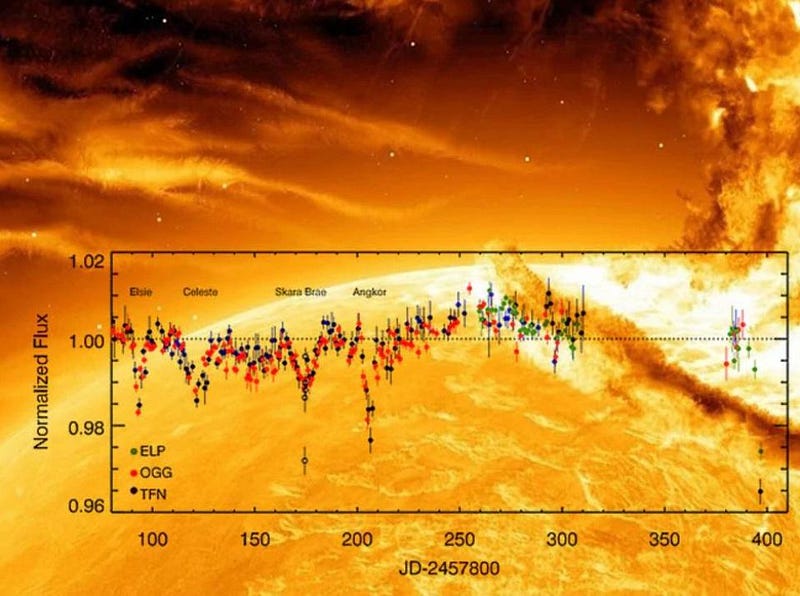
After all, Boyajian’s star is a combination of things that we wouldn’t expect to find together.
- It’s consistent with having a large amount of circumstellar dust, which normally indicates an extremely young star still in the formative stages.
- The star itself is brighter, hotter, and more massive than the Sun: it gives off more than four times the amount of light our Sun does.
- The star is old: hundred of millions of years old, burning stably on the main sequence by all accounts.
In other words, the dust we see should last only months given the properties of the star itself. There must be some way for the star to replenish its dust. As far as we know, there are two possibilities that make sense: either there’s an external dust ring that has dense dust clouds in it or infalling bombardment events, or there’s something external to the star that leads to this blocking of the starlight.
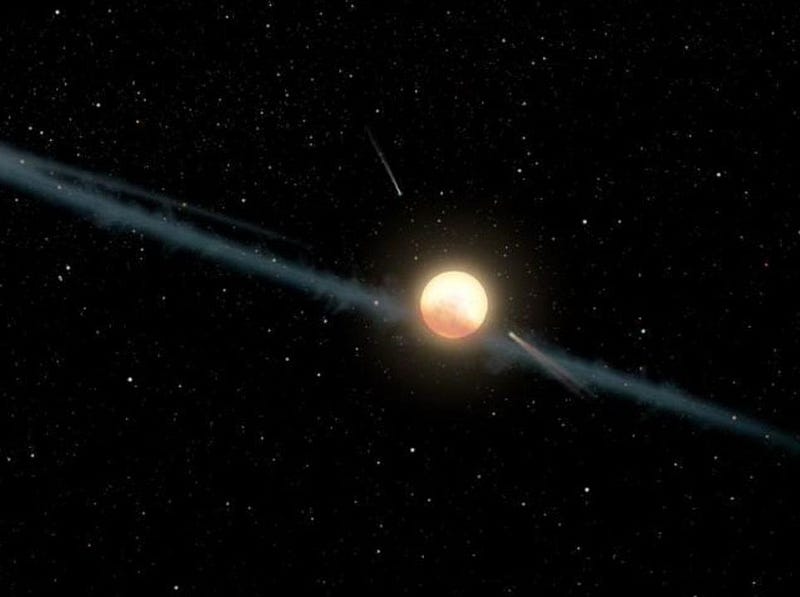
The declining brightness that’s been observed since 1890 appears to continue through the current 2018 data, but it’s not steady. In addition, there are long-period dips lasting months, and shorter dips lasting a day or less superimposed on top of them. It’s definitely due to dust particles, down to maybe about 100 nanometers in size. The ratio of how the light dims in different wavelengths/colors demonstrates that and rules out other hypotheses.
But where does that dust come from? To help narrow this down, the scientists involved calculated how much dust must be involved to explain the past 100+ years of dimming and dipping events. For what’s merely in the transiting plane defined by our point-of-view alone, we need to have an amount of dust equal to about the mass of the Moon.
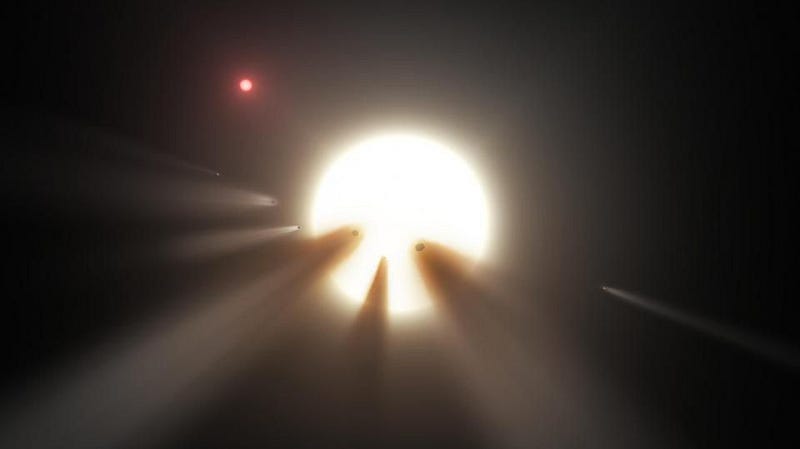
But there could be much more. Previous researchers have also suggested that there could be a large amount of more distant, interstellar dust, which the data supports.
This could either replace or be in addition to the circumstellar dust’s presence. As far as a disk of material around the star goes, the disk is a bare minimum. There could be a large amount of dust that isn’t just in the plane we observe, but also outside of it: in perhaps a halo. We simply don’t know, but we do know that if it does exist, it cannot be close enough to emit infrared radiation. Comets, too, should create infrared radiation; the James Webb Space Telescope should be able to tell, when the flux dips occur, whether the comet hypothesis is in or out.
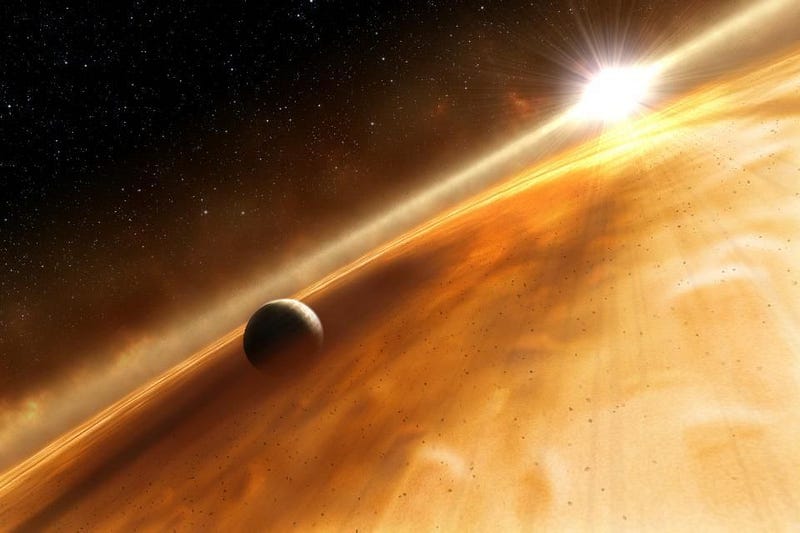
And finally, there’s a curious candidate explanation that’s been proposed: this dust could be the result of a case of stellar indigestion.
If a gas giant planet — say, the size of Uranus — were devoured by this star, it could be the culprit. An inspiral of a planet or a series of planetary bodies a long time ago, perhaps centuries or even many millenia ago, could have caused a temporary brightening, from which the star is now returning to its original, stable state. The flux dips we observe, then, could be due to planetary debris from an earlier disruption, or evaporation and outgassing of smaller bodies.
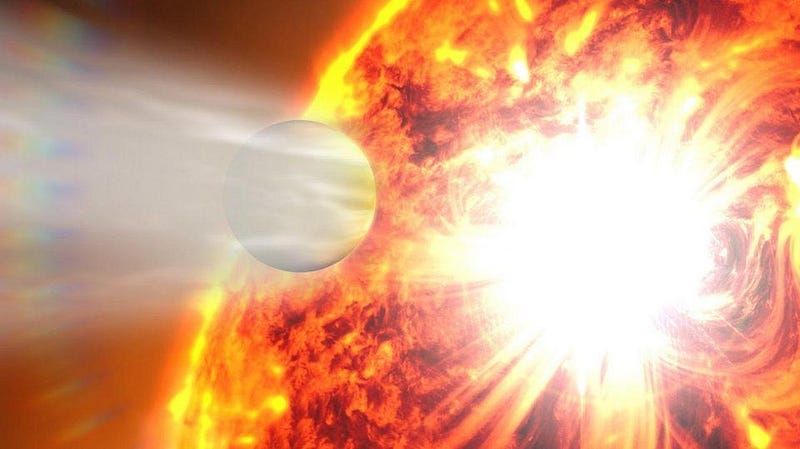
Regardless of the mechanism in question, we can be certain of one conclusion: the reason for the dimming of Boyajian’s star is due to dust. This is normal, particulate dust, containing particle sizes down to about 100 nanometers, or smaller than the wavelength of visible light. The same dust that causes short, day-or-less dips also causes dips that last many months, and also cause the decline that’s lasted more than a century. It’s all due to plain, normal dust.
The big, open question that now remains is where this dust came from? It’s not because the star is young or still forming, and there are incredible constraints on the star having an unseen companion. It cannot all come from interstellar dust. Was a planet devoured? Is there something even more unusual afoot? The only way to know will be with more — and better — science on this object. But one thing’s for certain: even if alien megastructures exist somewhere, they aren’t here.
Thanks to Jason Wright for his comments and recommendations in constructing this article.
Ethan Siegel is the author of Beyond the Galaxy and Treknology. You can pre-order his third book, currently in development: the Encyclopaedia Cosmologica.